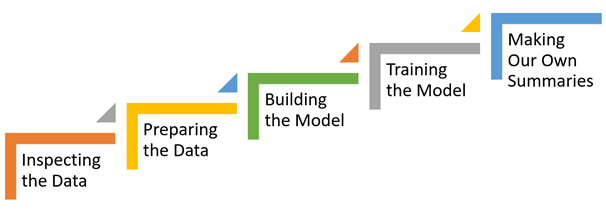- November 11, 2020
- Posted by: Vaibhavi Tamizhkumaran
- Category: Text Analytics

The Voice of your Customers
Listening to the customers and taking steps to address their problems is the first most important step towards customer success. That is why Voice of Customer (VoC) is a vital component of a company-wide initiative to bring value and satisfaction to its customers. VoC consists of programmes aimed at gathering consumer insights, closing the feedback loop and prioritising changes to deliver happier and profitable customers. But the VoC moves the emphasis from aggregation of aggregated data to individual data. This results in a structured approach to enhancing customer service, resolving problems and driving growth for the company.
VoC can be analysed by conducting surveys, collecting feedbacks, calculating net promoter score, raising focus groups, and many other methods.
The collected aggregated data needs to be analysed and summarised to bring out the overall/ summarized voice of all the customers.
You might want to read on Why teX.ai Can Help You Build A Truly Customer-centric Business?
Customer Experience Summarization For Better VoC Analysis
“I don’t want the full report, just give me the summary of the reviews”- this is the need for all businesses that have the need to understand the customer experience towards their product/service.
Most of the products/ services today have an online platform for sale. The online platforms can include websites, applications, social media platforms and so on.
Text summarization solution plays a vital role in providing app review summaries, social media review summary reports and website review summaries to understand the voice of customers.
The Two Main Approaches to Summarization:
Extractive summarization- This works by choosing and organising the most meaningful sentences in an article in a detailed manner. This means that the summary sentences are taken from the article without any changes.
Abstractive summarization- It works by paraphrasing its own version of the most important sentence in the article. It operates by paraphrasing its own version of the most relevant sentence of the file/document.
There are Two Scales of Document Summarization:
Single-document summarization- The role of summarization is a stand-alone text. The document can apply to any item depending on the usage (URL, internal PDF, contract, report, email, text message, etc…).
Multi-document summarization- The role of compiling a collection of documents and producing a description that contains viewpoints from across documents.
You might want to read: Multi Document Summarization Made Easier Using teX-Ai
Two Common Metrics any Summarizer Tries to Optimize:
- Topic coverage index: Does the summary incorporate the main topics from the document?
- Is it readable: Do the summary sentences flow in a logical way?
Considering examples of Businesses that sell products/services on applications, Websites & other Online Platforms
There is an algorithm to summarise the reviews/feedbacks that uses ML and AI technologies into text analytics software that run using Natural Language Processing methods to extract, classify and summarise the aggregated data of the customer experiences to bring out a summarized report of the Voice of Customers. It is broadly referred to as ‘Reviews Summarization’.
Creating an algorithm for the summarization process:
This algorithm is the base to extract, classify and summarize the reviews/ feedback in the Applications, websites, and other online selling platforms. Text analytics software run using deep learning, ML and AI technologies to understand the algorithm and implement it accordingly.
Below is how the summarization process takes place.
- Aspect accuracy- How well the chosen sentences reflect the aspect they are intended to be.
- Coverage- How many of the aspects discussed in textual analysis are reflected in the sentences.
- Rating consistency- how compatible the selected sentences are with the ratings of the summary aspect.
- Summary quality- the thin line between the subjective human decisions to the summaries by the robot that are compared.
A detailed description of the summarization task evaluation will be published elsewhere.
Some Use Cases
- Online shopping applications- Amazon, Flipkart, Myntra
- Food delivery/ restaurant finding applications- Swiggy, Zomato, Dineout
- OTT platforms that stream online tv shows& movies- Netflix, Prime, Hotstar
- Healthcare applications- CureFit, Healthify
- Job portals- Naukri, Indeed
- Gaming applications
- Social media platforms- Instagram, Facebook, Twitter
Wind-Up
A Customer success strategy is designed to help customers obtain the desired result while using your product/service. Generating customer review summary reports, can help in making decisions in favour of consumers. Businesses need to follow the mantra of Collection, Analysis & Implementation of the customer experience data to device responsible insights to protect the customer needs and wants.
teX.ai can help your business through the journey of creating exceptional customer experiences by summarizing your business reviews and make a difference in your customer success strategy!



